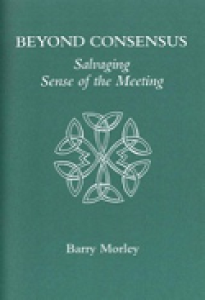
BEYOND CONSENSUS
Salvaging the sense of the Meeting
Book Categories
Pendle Hill Pamphlets
ISBN
0875743072
Publisher
Pendle Hill Pamphlet 307, US, 1993, 32pp
Price
$20.00